HELP! My Baby has a Contact Rash from a New Food with Ron Sunog, MD
- Why a rash around the baby's face that disappears on its own is significantly different than a severe food allergy reaction...and how to tell the difference between the two
- The Atopic March (also called the allergic March): how the series of allergic diseases progresses during and after infancy from atopic dermatitis (eczema) to food allergy, severe runny nose (allergic rhinitis) and asthma
- What to do if your baby has a contact rash around the mouth...and why teething and drool can make things seem so much worse (even when they really aren't)
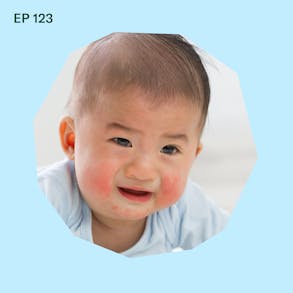
LISTEN TO THIS EPISODE
Episode Description
What if your baby gets a red rash or a contact rash around the mouth or lips when trying a new food? Is this something to worry about? Will it go away on its own? Or is it a sign of a bigger problem?
Pediatrician Dr. Ron Sunog who specializes in preventing food allergy with food is joining me to teach about what to do if your baby gets a contact rash from new foods. He’ll explain why this happens, what causes it and what to do when your baby does have a rash from new foods.
If all this food allergy stuff scares you, Dr. Suno and I are co-teaching a series of free LIVE workshops called “What Do I Do if My Baby Has an Allergic Reaction to Food?” Everyone in the workshop gets a copy of our free Food Allergy Emergency Reaction Map....hang this one on your fridge and you’ll never have to wonder if you’re taking the right steps in the event your baby has a reaction to food.
About the Guest
- Pediatrician who specializes in preventing food allergies with food. Completed his Residency and Chief Residency in Pediatrics at Boston City Hospital.
- He was inspired by the LEAP study to create EatTheEight to inform parents about infant feeding to reduce risks of developing food allergy.
- Completed his degree at Boston University School of Medicine (Graduated 1984). Specializes in Pediatrics and Internal Medicine/Pediatrics
- Affiliated with Signature Healthcare Brockton Hospital and South Shore Hospital
- Author of: Eat The Eight: Preventing Food Allergy with Food and the Imperfect Art of Medicine
Links from this Episode
- Dr. Sunog’s book: Eat the Eight: Preventing Food Allergies with Food and the Imperfect Art of Medicine
- EatTheEight webpage HERE
- Baby-Led Weaning with Katie Ferraro program with the 100 First Foods™ Daily Meal Plan, join here: https://babyledweaning.co/program
- Baby-Led Weaning for Beginners free online workshop with 100 First Foods™ list to all attendees, register here: https://babyledweaning.co/baby-led-weaning-for-beginners

Latest Episodes
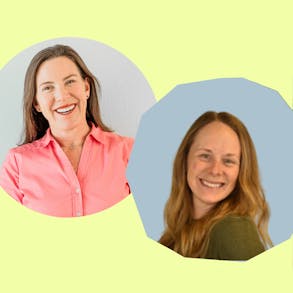
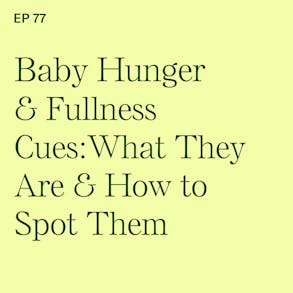
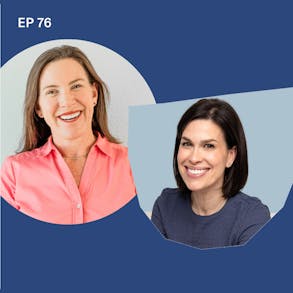
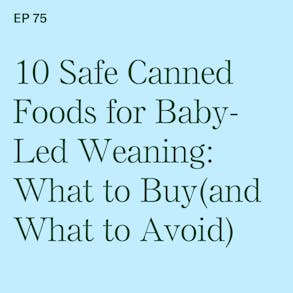
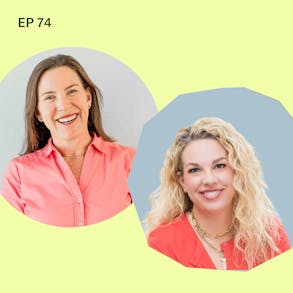
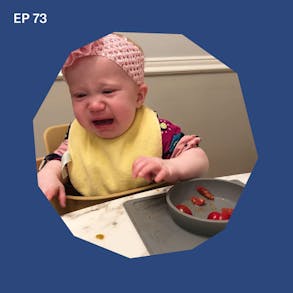
Ron Sunog, MD (0s):
If a baby has a topic dermatitis, it's not caused by food. It's something they're born with and makes them more susceptible to developing food allergy. One way to combat that susceptibility, to developing food allergies, to actually giving them the food.
Katie Ferraro (15s):
Hey there, I'm Katie Ferraro, registered dietitian, college nutrition professor, and mama of seven specializing in baby led weaning. Here on the baby led weaning made easy podcast, I help you strip out all of the noise and nonsense about feeding, leaving you with the competence and knowledge you need to give your baby a safe start to solid foods using baby led weaning.
Ron Sunog, MD (42s):
Well, hey guys, welcome back today. We're talking about a topic that's a little bit scary to parents when they try new foods with their babies. And that is what do you do if your baby gets a contact rash from a new food, and we're not talking about a full blown allergic reaction here, but a lot of times a new food will interact with the drool that your baby has from teething and it'll cause some red rashy bumpy stuff going on around the face.
Katie Ferraro (1m 3s):
And is that something that you need to worry about? Well, I'm joined today by my friend and colleague, Dr. Ron Sunon. Dr. Sunog is a pediatrician who specializes in preventing food allergy with food. He's also the author of the book Eat the Eight. So the eight refer to the big eight allergenic foods. Those are the eight foods that account for about 90% of food allergy and Ron's book Eat the Eight is all about preventing food allergy with food and the imperfect art of medicine. So he really gets it, especially as a pediatrician, seeing parents like you and me every day that these topics can be scary, they can be confusing. And he has a very nice, straightforward way of helping us kind of cut through all of the noise out there and say, what's really going on.
Katie Ferraro (1m 45s):
And what's the best thing to do for my baby. So Dr. Sunog and I are also going to be hosting a free online workshop. That's called, what do I do if my baby has an allergic reaction to food? If you're interested in this, you're starting new foods with your baby. You're introducing the allergenic foods. You might wonder what allergic reactions look like and what you should do if your baby has one. That's exactly what Dr. Sunog and I are co-teaching this free workshop together. If you want to sign up for the free workshop that Dr. Sunog and I are teaching together, go to the show notes page for this episode at blwpodcast.com/123, and you can get signed up for free. There will help talk you through, what do you do if your baby has an allergic reaction to foods But in today's episode, Dr.
Katie Ferraro (2m 27s):
Sunog is going to help us to figure out what to do if our baby has a contact rash from a new food. So with no further ado here is Dr. Ron Sunog. All right. Well, Ron, thank you so much for joining me today. I'm so excited to chat with you.
Ron Sunog, MD (2m 41s):
Thanks for having me. It's always fun.
Katie Ferraro (2m 43s):
This topic is a hot topic with parents because parents freak out when their babies try a new food and there's any changes in skin. So we're going to talk about what some of the signs of true food allergy, but are, but like, what does the term contact rash means for moms like, and care takers, and dads who are listening? How does it differ from a full blown, allergic reaction? If you don't mind, maybe just like setting it up for us as far as like the terminology goes.
Ron Sunog, MD (3m 9s):
Sure. So like so many areas in medicine, and as we're discovering in allergy, people use these words and throw them around very interchangeably. And to some extent they really are interchangeable, but although that makes it easier to talk about it also can lead to confusion. So the simplest way to think about it is the umbrella term let's call, it is eczema and eczema is skin that is dry, usually a little bit red, itchy, and most people have had, or seen eczema at some point. And it just looks like what a lot of people would just say, oh, I have this dry rash.
Ron Sunog, MD (3m 52s):
And then the question is, well, what's the cause of it? And so there are a number of causes and would really the two causes that we're really thinking about and talking about here are number one, what would be called atopic dermatitis. And number two, contact dermatitis. But I would say also many people would be familiar with contact dermatitis if, for no other reason, for example, poison ivy. That's a great example. That is contact dermatitis.
Katie Ferraro (4m 19s):
Okay. I want to say something funny. Cause the other day we had a, I was interviewing the founder of an all natural skincare line for babies and she was talking to him, talk about how like bogus natural stuff is like in food and in skincare. And she's like, yeah, like if you think about it, poison ivy is a natural botanical implant product, but do you want it on your body? So I was just kind of funny to hear the poison ivy analogy again.
Ron Sunog, MD (4m 40s):
Right. I often use the example of a hemlock. Hemlock is natural, but you wouldn't eat it. So, and here's the major difference atopic dermatitis is there reason infants get that is a problem with the skin barrier. And there's a problem with a protein in the skin and infants, then we'll develop again, eczema again. So using the term eczema to describe the rash that you can see and that people experience when infants get it for what appears to be sort of no reason, they didn't come across poison ivy and they didn't touch any particular potentially irritating product or object.
Ron Sunog, MD (5m 25s):
And it could be that too. Of course. I mean it, could it be a, the detergent, could it be something in clothing, etcetera, etcetera. But if there's no particular cause found, it's probably what we call atopic dermatitis. Then we've got what we call a contact dermatitis and that's basically just irritation of the skin. So you don't need to have a atopic dermatitis to experience contact dermatitis. Again, somebody who's never had eczema, their whole life, can come in contact with poison ivy and get the rash. Somebody doesn't have a problem with most things comes across a particular detergent that irritates their skin and they get the rash. Those are the two main differentiations in what we're talking about here
Katie Ferraro (6m 8s):
And does a baby drooling in that presence of drool in conjunction with the new protein or whatever component is the food that's irritating them. Does the drool make it worse around the face?
Ron Sunog, MD (6m 19s):
Right. So you can have a baby who has no atopic dermatitis. And again, let me say a little more about that. First atopic dermatitis is a problem with the barrier of the skin and is a problem that is connected to other what we call atopic diseases in life. So, and people call it the atopic March and you go from a atopic dermatitis to food allergy to fancy word for runny nose from allergy rhinitis, allergic rhinitis and asthma. Those are all atopic diseases. Okay. So drool around the mouth. That's just irritation. Here's an example, maybe not so much in San Diego, but if you're in a climate where it's cold and or dry, your hands are wet, you don't dry your hands well.
Ron Sunog, MD (7m 7s):
For example, here I am in a, in the Boston area, you don't dry your hands. Well, and you let them air dry in this super dry air we have here in the winter and then they start to get dry and itchy. That's a kind of eczema, okay. But it's not atopic dermatitis. It's not even really contact dermatitis since it wasn't contact with anything. Okay. So getting back to the drool, it's just the irritation. What is it in the drool that irritates? You know, anybody knows you lick your lips too much after the hair dry and you get that, you know, red circle kind of around your lips, the, the, you know, the dry redness. So, and here, I'm going to just go on a little bit more is where a little bit of the confusion comes in.
Ron Sunog, MD (7m 49s):
You can have a atopic dermatitis, which is an inborn problem with the skin that leads to an examiners rash. And that can in fact be made worse by a number of things, including foods, but they're not being caused by the food. They can just be exacerbated. The rash can be exacerbated by the food. So there's a difference there.
Katie Ferraro (8m 11s):
How likely are contact rashes for babies? Like, are there statistics on there? Is this something we see all the time like parents should be aware of or like this almost never happens? Can you quantify it?
Ron Sunog, MD (8m 21s):
So, no, I can't specifically quantify it so I can mostly speak from my experience. And you know, from what I've read, there are statistics on eczema, specifically, atopic dermatitis in infants. And as far as contact dermatitis, I'm not aware of any statistics, but I would say there's almost nobody who isn't, let's call it sensitive to something. Again, to go back to poison ivy, about 85% of people. If they come in contact with poison ivy will develop a poison ivy rash. They will get eczema from the poison ivy, the other 15% do not. And so for any particular irritant, it varies. So, no, I don't have exact numbers on that.
Katie Ferraro (9m 3s):
Okay. What about if your baby does get a contact rest? Let's say you're trying a new food. That's like unlikely to cause an allergy tomatoes are the one that comes to mind. A lot, a lot of babies will, if they have tomato sauce on their face or they're trying, if we do cherry tomatoes, we quarter them for babies. Once they have their pincer grasping and pick it up and eat it. If you baby tries tomatoes and all of a sudden there's some red rashy stuff around their mouth, what should parents do? Did they keep feeding that food? Do they observe like, what's your suggestion? If it's not like full-blown signs of a food allergy, but just this dermatitis, what do they do next?
Ron Sunog, MD (9m 34s):
Right. So what really happens there is of course the parents starts to worry, is this an allergic reaction? And what you described is not, it's pretty much that simple. So what do you do well again, if there were any irritant causing your baby to have a rash, I would remove the irritant. And you know, if possible, again, it's a little, little harder with a baby, you know, and particularly around the mouth, but provide something to sooth that rash, which basically for the most part means, you know, open a moisturizer or something like that. I would wait till it goes away. And then from a safety point of view, feel absolutely safe about giving that food again. And you know, maybe as they get older and drool less, maybe it doesn't happen again.
Ron Sunog, MD (10m 18s):
If it remains an irritant, you might want to avoid it simply because it's irritating, but not because it's allergic and not because you have to fear it in any way.
Katie Ferraro (10m 27s):
And I think that's a really important point that you make. So oftentimes we run into parents who are like, well, when in doubt, leave it out. I'm just going to like, never feed the baby tomatoes again. It's like, well, listen, your baby doesn't have a true food allergy to tomatoes. Is it really feasible for you to be essentially unnecessarily withholding this food? Especially if we'd like tomatoes, great source of vitamin C helps your baby absorb the iron from the other foods. They're eating is in a lot of foods, but just because they get a little rash from it, if it goes away on its own, am I hearing you say that it's not really something you need to worry about?
Ron Sunog, MD (10m 58s):
Absolutely. And eliminating foods from your diet. I mean, when it's necessary, you have to do that. But when it's not necessary, it sure is a pain starting with having to be vigilant about it and worry about it. And then if you think it's really allergic, worrying that your baby will have a more serious reaction, etcetera, etcetera. No need to go down that road if it's not necessary.
Katie Ferraro (11m 22s):
Okay. Parents love to take pictures of their babies, but I know you're always suggesting the parents should take a picture of what's happening around the mouth. If there is a contact reaction, is that correct? Would you suggest that?
Ron Sunog, MD (11m 32s):
I would suggest it if you're not sure. Pictures worth a thousand words, despite, you know, someone can listen to this podcast, someone can read etcetera, etcetera, and still when faced with it in reality, feel anxious about it. So sure. Take a picture. You're going to stop the food right then and there just because it's irritating, not for any other reason. And you know, don't make a plan to never give that food again, but sure. You don't want to give it until you feel more certain, take that picture, show it to your provider, your pediatrician, see what they say.
Katie Ferraro (12m 4s):
Now I have another question about eczema. You explained it a little bit, but I know we work on some projects together in the world of allergy. And I've learned from you when we talk about parents will sometimes say, oh, X, Y, or Z food causes my baby's eczema to flare up. And you're always pointing out that eczema is more of a risk factor than it is necessarily a symptom of food allergy. A, am I hearing you correctly? And B, could you clarify that for parents who might be like, oh, so maybe like some dairy that makes the eczema worse is not really the worst thing.
Ron Sunog, MD (12m 35s):
Yeah. So that is a really important thing to clarify. So again, if a baby has atopic dermatitis, it's not caused by a food, it's something they're born with. And it in fact makes them more susceptible to developing food allergy. One way to combat that susceptibility, to developing food allergies, to actually give it in the foods. Now you do sometimes run into a little problem in that if the eczema is a atopic dermatitis, other things can exacerbate it, make it worse. So for example, any parent of a baby with eczema that is atopic dermatitis, and that's going to be most of it in infancy knows that if their skin gets dry, just like, if you don't dry your hands well in cold, dry weather, that atopic dermatitis is going to get worse.
Ron Sunog, MD (13m 23s):
Okay. In that same way, some foods seem to simply make it get worse. So it's not a direct reaction to the food. It's not caused by the food, but the rash can get worse because of the food. Would you have to totally avoid that food? I would say almost never, not never. Sometimes you just can't help it. Sometimes every time you give a particular food, the exit would just gets so bad and whatever you do, you can't make it better. And so, you know, for simple comfort, you may choose in the end to avoid that food. That's going to not happen very often. The real answer is to treat the heck out of the eczema, and then you should be able to continue giving that food. And if it's one of the eight or let's call it nine most allergenic foods, adding sesame to the original eight, you keep giving those foods because if you don't, avoiding those foods in combination with the fact that the baby has a atopic dermatitis actually increases their risk of developing food allergy.
Katie Ferraro (14m 21s):
Alright. Now, I know the point of today's episode is to talk about contact rash, which at the end of the day is not a major deal. And usually is going to go away on its own. And you're totally safe to reintroduce the food in most cases. But I would be remiss if we didn't talk about how to identify the signs of true food allergy and you and I are doing some workshops on that, but sort of summarizing the whole thing. What is the opposite? Like when should we worry and be like, oh, this is more than a contact rash.
Ron Sunog, MD (14m 49s):
So to put it in the word in terms of rash hives, if you see hives and the easiest way to imagine hive is it looks pretty much like a mosquito bite. They can be, you know, bigger than what you pictures, a mosquito bite. They can be smaller. They can be one, several, many. And if it's not hives, because if it's just a particularly around the mouth or wherever the substance may have touched the infant, if it just dryness a little bit of redness, not a raised mosquito bite looking thing, it's almost certainly not a food allergy reaction. And of course there are other food allergy reactions that aren't rash. And so you need to watch for those too.
Ron Sunog, MD (15m 32s):
So the other things to watch for are swelling, which can be swelling of lips, tongue, difficult breathing which would include cough, wheezing, breathing hard or fast and vomiting, and then more sort of what we call systemic or generalize reactions and infant can get super fussy or can get very lethargic. And that's from things happening physiologically in the body that you're not going to be able to see in other ways. So those were all the things to watch for an easy way to think of it is you've got the, eczema looking rash, the contact dermatitis, just some redness and irritation and everything else. And it's just that redness and irritation.
Ron Sunog, MD (16m 14s):
You're basically home free, it's fine.
Katie Ferraro (16m 15s):
Well, thank you so much, Dr. Sunog. I think you just put a lot of parents at ease that they're a little bit more prepared about what to do in the event that their baby does have a contact rash.
Ron Sunog, MD (16m 26s):
Great. Glad to do it.
Katie Ferraro (16m 27s):
Well, I hope you guys enjoyed that episode and interview with Dr. Ron Sunog. He is one of my favorite people on the planet. He's been on the podcast, a ton, he's kind of my go-to guru for food allergy questions. And as a pediatrician, he really gets it. He loves the food first approach, which I do as well. We're firm believers, that babies who are six months of age plus showing the other signs of readiness to feed can safely eat all of the big eight allergenic foods. You don't need to buy some silly little stick packet that you stir into a bottle or mixed into a puree. Your baby can learn to eat these foods and you can introduce the allergenic foods that way. So Dr. Sunog and I are going to be, co-teaching a free workshop together called what do I do if my baby has an allergic reaction to food?
Katie Ferraro (17m 9s):
Because we know you're on board with trying these new foods, but you might be scared about what to do if there actually is an allergic reaction and we believe that knowledge is power. So come check out our free online workshop that we're going to be teaching live together. If you go to the show notes page for this episode at blwpodcast.com/123, you can get signed up for our upcoming workshop. Don't forget to also check out Dr. Sunog's book called Eat the Eight. It's all about preventing food allergy with food. What a novel concept, right? In the imperfect art of medicine, he's a pediatrician. I'm a registered dietitian, and we would love to see you on our free live workshop called What do I do if my baby has an allergic reaction to food?
Katie Ferraro (17m 50s):
You can get signed up one more time. That's at blwpodcast.com/123, and maybe we will see you there. Bye now!
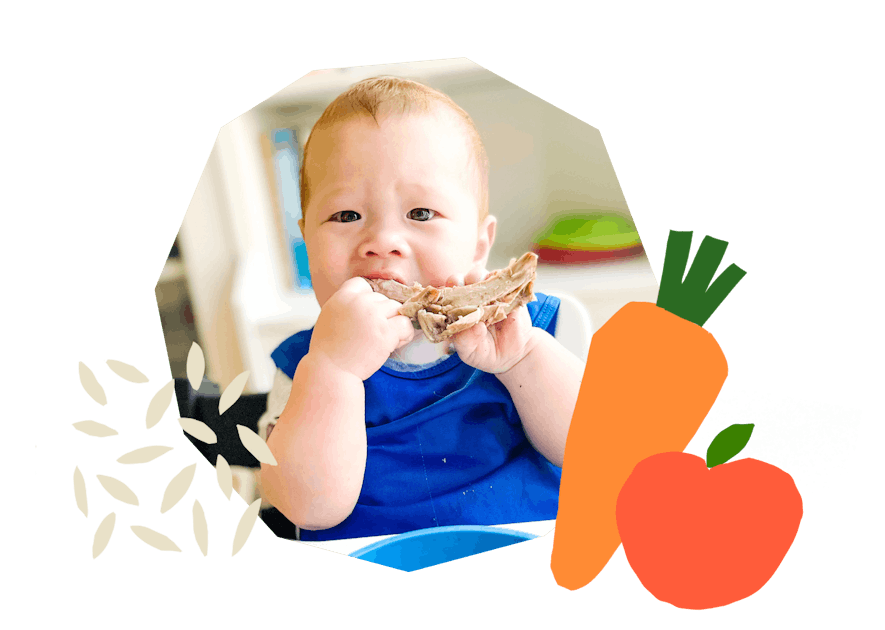
The Program Baby-Led Weaning with Katie Ferraro
A step-by-step digital program for starting solid foods safely and navigating the original 100 FIRST FOODS™ meal plan with baby-led weaning.
 EXPERT-LED, PROVEN APPROACH TO EATING REAL FOOD
EXPERT-LED, PROVEN APPROACH TO EATING REAL FOOD CONCISE VIDEO TRAININGS TO MASTER BABY-LED WEANING
CONCISE VIDEO TRAININGS TO MASTER BABY-LED WEANING 100 FIRST FOODS DAILY MEAL PLAN WITH FOOD PREP VIDEOS
100 FIRST FOODS DAILY MEAL PLAN WITH FOOD PREP VIDEOS
Baby-Led Weaning for Beginners Free Workshop
Is your baby ready to start solid foods, but you’re not sure where to start? Get ready to give your baby a solid foundation to a lifetime of loving real food…even if you’re feeling overwhelmed or confused about this next stage of infant feeding.
Get baby-led weaning recipes and tips delivered to your email inbox.

